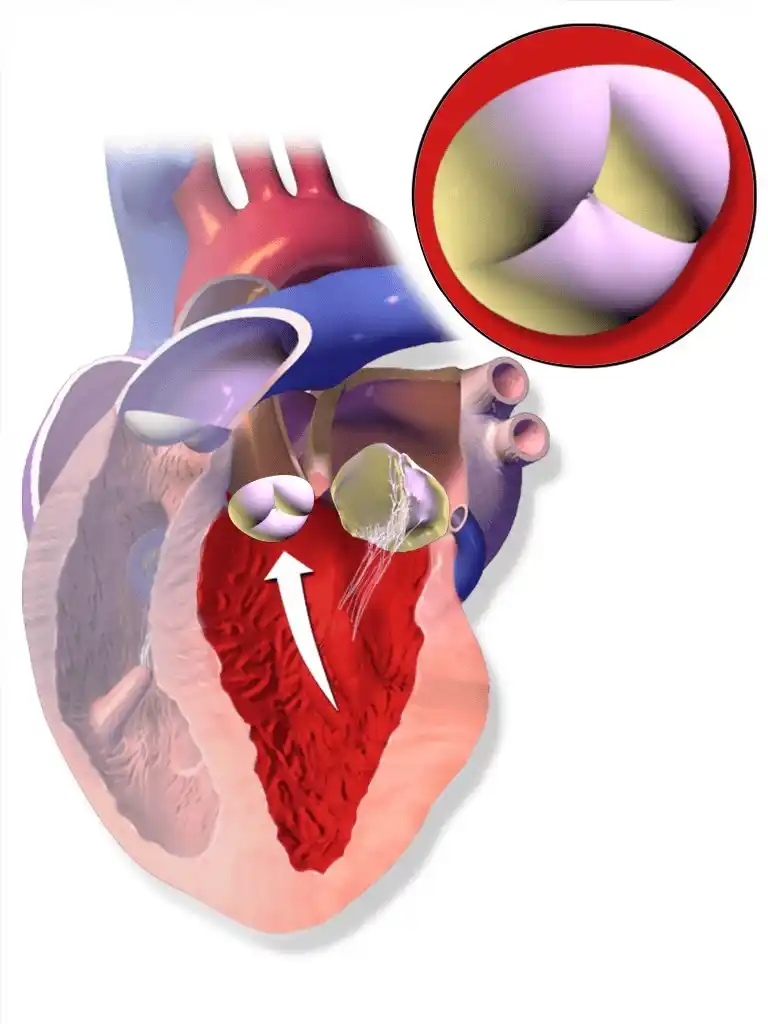Aortic Stenosis
Comprehensive Guide to Causes, Symptoms, and Treatments

What is Aortic Stenosis?
Aortic Stenosis is a condition where the aortic valve, which regulates blood flow from the heart to the aorta, becomes narrowed. This narrowing restricts blood flow, forcing the heart to work harder to pump blood to the rest of the body. Over time, this increased workload can weaken the heart and lead to severe complications.
Key Differentiators
- Progressive narrowing of the aortic valve
- Often asymptomatic in early stages
- Common in older adults due to calcification of the valve
- Requires timely intervention to prevent heart failure
Symptoms
Symptoms of Aortic Stenosis often appear in advanced stages and can include:
- Chest pain or discomfort (angina)
- Shortness of breath, especially during physical activity
- Fatigue and weakness
- Heart palpitations
- Lightheadedness or fainting (syncope)
- Swelling in the legs or feet (edema)
Causes and Risk Factors
The primary causes of Aortic Stenosis include:
- Age-related calcification: Calcium deposits on the aortic valve over time.
- Congenital defects: Such as a bicuspid aortic valve, present at birth.
- Rheumatic fever: A past infection causing valve damage.
- Radiation therapy: Can lead to valve thickening or scarring.
- High cholesterol and hypertension: Contributing to calcification and vascular changes.
Treatment Options
The treatment for Aortic Stenosis depends on its severity and the patient's overall health. Common options include:
- Monitoring: Mild cases may require regular check-ups and echocardiograms to track progression.
- Medications: While they don't cure the condition, they can help manage symptoms like high blood pressure.
- Transcatheter Aortic Valve Replacement (TAVR): A minimally invasive procedure to replace the valve without open-heart surgery.
- Surgical Aortic Valve Replacement (SAVR): Open-heart surgery to replace the damaged valve with a mechanical or biological valve.
Risks and Complications
If untreated, Aortic Stenosis can lead to serious complications, including:
- Heart failure due to the heart's inability to pump blood effectively
- Stroke caused by reduced blood flow to the brain
- Irregular heart rhythms (arrhythmias)
- Sudden cardiac death in severe cases
Recovery and Follow-Up
Recovery after treatment depends on the type of procedure:
- TAVR: Patients often recover within a week, with minimal hospital stay and faster return to daily activities.
- SAVR: Recovery may take 6-8 weeks, with a gradual increase in physical activity and cardiac rehabilitation.
Long-term management includes regular follow-ups, echocardiograms, and lifestyle changes such as maintaining a heart-healthy diet, exercising regularly, and avoiding smoking.
Conclusion
Aortic Stenosis is a serious condition that requires timely diagnosis and treatment. Advances in minimally invasive techniques like TAVR have improved outcomes, allowing patients to enjoy better quality of life. Regular monitoring and proactive management are essential for long-term success.